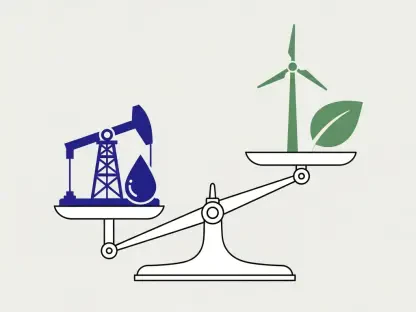The global oil market has recently witnessed a notable shift as Brent Crude prices slipped below the $70 per barrel mark, sparking concern among industry analysts and traders alike, who are closely monitoring the situation. This decline, observed in early trading sessions with Brent dropping by 1.74% to $68.87 per barrel, comes after a brief peak at $70—the highest in nearly two months. Simultaneously, the U.S. benchmark, WTI Crude, mirrored this trend with a 2.02% fall to $64.36 per barrel. Such a downturn raises critical questions about the underlying forces at play in an industry already grappling with fluctuating demand and geopolitical intricacies. The primary drivers behind this price retreat appear to be rooted in anticipated increases in global oil supply, compounded by seasonal demand patterns. As the market navigates these challenges, understanding the dynamics of supply surges and organizational strategies becomes essential to deciphering the current trajectory of oil pricing on the international stage.
The Impact of Rising Global Oil Supply
A significant factor contributing to the downward pressure on Brent Crude prices is the resurgence of oil supply from unexpected regions, adding substantial volume to an already saturated market. Notably, Iraq has resumed crude oil exports from its Kurdistan region via a pipeline to Turkey’s Mediterranean coast, following a prolonged halt of over two years due to disputes over export rights and revenue sharing. This development injects an estimated 230,000 barrels per day into the global supply chain, a volume that could tip the balance further toward oversupply. The timing of this resumption is particularly critical as it aligns with the conclusion of the peak summer demand period, a season when consumption typically wanes. Market observers have expressed apprehension that this additional supply, arriving at a time of softening demand, could exacerbate the bearish sentiment among traders. The convergence of these elements paints a challenging picture for price stability, as the influx of oil tests the market’s capacity to absorb excess without further erosion of value.
OPEC+ Strategies and Market Reactions
Equally pivotal in shaping the current oil price landscape is the role of the OPEC+ alliance, which is poised to make decisions that could further influence supply dynamics. With a crucial meeting on the horizon, the group is contemplating additional production hikes, planning to unwind 137,000 barrels per day of existing cuts starting this month, with potential further reductions of the same volume in the following month. However, skepticism lingers about the actual implementation of these increases, given capacity constraints among some member nations and compensatory adjustments for prior overproduction. Interestingly, despite these bearish signals of rising supply, Brent prices have hovered closer to $70 than $65 per barrel in recent weeks, suggesting a degree of market resilience. This stability may stem from underlying factors such as geopolitical uncertainties or doubts about the full realization of announced production boosts. As the industry reflects on these developments, the delicate interplay between planned supply adjustments and actual market response underscores the complexity of predicting oil price movements in such a volatile environment.









